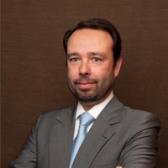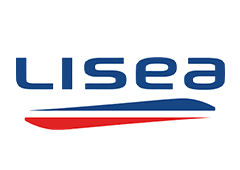Transport working group explores the paths towards net-zero emissions
Responsible finance
Transport working group explores the paths towards net-zero emissions
-
05 July 2021
-
Real Assets
-
Infrastructure, Sustainability
Reading time: 15 minutes
Stakeholders’ pressure on companies to make real progress towards reducing carbon emissions is increasing. Climate emissions regulations and reporting obligations are becoming steadily stricter in many parts of the world. Customers and other members of the civil society are demanding greater scrutiny, while staff and prospective employees expect their organizations to be agents of change towards carbon neutrality.
“It is paramount to be proactive in the management of climate-related risks and opportunities throughout our investment life-cycle,” said Pierre Klemas, Sustainability Director at Ardian. “That is why we always endeavor to use the best available standards to improve our approach. Beyond carbon accountability, we actively support all our portfolio companies to set emission reduction targets necessary to align with 2°C trajectories.”
As part of Ardian’s efforts to accelerate its portfolio’s transition to a low carbon economy, the Transport Working Group (TWG) set up by the Infrastructure and Sustainability teams used its second workshop to explore the practical challenges of mitigating climate change impacts.
The Working Group brings together five transport-focused companies in Ardian’s infrastructure portfolio. Including the motorway operators Ascendi from Portugal; ASTM, based in Italy; Vespucio Norte from Chile; SEA, which operates Milan’s two airports, and Lisea, which manages the 300-km high-speed rail link between Tours and Bordeaux in France. In addition, former portfolio company Indigo, the French car park operator, is part of the Working Group.
In this context, the Carbon Neutrality workshop was organized with TWG members to discuss the major challenges and opportunities related to low-carbon emission pathways.
“Together within the Transport Working Group, our aim is to identify areas for action and progress as quickly as possible towards net-zero emissions.” said Raphaëlle Muhlmann-Eytan, Director of Asset Management at Ardian Infrastructure. “An important part of the debate relates to Scope 3: those indirect emissions that occur along the value chain from both suppliers and end customers. Even though, the challenges are clear in the process of setting reduction targets, we always endeavour to seize business opportunities and foster innovative approaches with all our stakeholders.”
Real-time monitoring extends to motorways
Ardian has been pursuing initiatives to combat climate change for many years and adopts the most advanced global standards, such as the Greenhouse Gas (GHG) Protocol, to improve carbon accountability throughout the value chain of its portfolio companies. In 2020, Ardian became a supporter of the Taskforce on Climate-Related Financial Disclosures (TCFD), a global organization that promotes consistent management and reporting of climate risks. Every year, Ardian’s Infrastructure and Sustainability teams engage with the portfolio companies to support the assessment of carbon emissions, develop reduction strategies, manage climate-related risks and seize new business opportunities.
Also, Ardian has developed tools such as AirCarbon to measure and analyze emissions data from its airport operations in real-time. In particular, during the TWG Carbon Neutrality workshop, Skander Kamoun, Data Scientist for Ardian Infrastructure, explained how the tool combines data from multiple sources to calculate emissions from aircraft movements, ground operations, the terminal buildings & services, and passenger travel to and from the airport.
Using the experience of AirCarbon, Kamoun presented Ardian’s new project CarCarbon, aimed at measuring and analyzing real-time emissions from road traffic. This tool will seek to further improve on current emissions models that are mainly based on the number and size of vehicles but do not integrate specific data on speed, congestion and driving behavior.
These data gaps are being addressed via a partnership with Waze, a Google subsidiary, to capture anonymized real-time traffic data such as speed and acceleration. To generate detailed data, CarCarbon will be compatible with the computer-vision based solution software Wintics for mobility management that Ascendi has implemented in Portugal. The Wintics solution extracts data from the network of roadside cameras to generate accurate, real-time traffic data. Ultimately, Kamoun said, adding machine-learning capabilities will also allow the CarCarbon model to predict traffic levels and manage flows to minimize congestion and therefore reduce carbon emissions.
Ascendi is actively investing to reduce carbon emissions. Our ecosystem of smart roads and mobility partners is accelerating new solutions that improve our customers' experience and contribute to carbon neutrality goals.
Indirect carbon emissions pose a major challenge
The AirCarbon tool provides a good illustration of the challenges facing infrastructure companies in reducing their overall carbon emissions. Kamoun explained that aircraft movements and activities within the airports themselves – defined by the GHG Protocol as Scope 1 and 2 emissions – accounted for around two-thirds of carbon emissions captured by Air Carbon.
Passengers travelling to and from the airport create the remaining third of the emissions that fall into the Scope 3 of the GHG Protocol. However, Scope 3 also includes many other sources of emissions that are not captured by AirCarbon, such as the supply chain and transport-related emissions of all goods and services used within the airport. Scope 3 emissions overall, therefore, account for a significant proportion of an airport’s carbon footprint but are not under the airport operator’s direct control. Airports have direct control over only around 5% of their carbon footprint.
The huge share of emissions that fall under Scope 3 is a common feature of economic infrastructure assets and makes the process of moving towards carbon neutrality particularly challenging. Finding solutions, such as Ascendi’s partnership with Wintics, is essential to gain insights into the sources of emissions that are outside the infrastructure operator’s control.
Scope 1-3 Emissions
Greenhouse Gas Emissions (GHG) can be grouped in three buckets:
- Scope 1 - Direct emissions from activities owned or controlled by the organization
- Scope 2 - Indirect emissions from the organization’s consumption of the energy it buys for lighting, heating, cooling, etc.
- Scope 3 - Other indirect emissions that are a result of the organization’s activities but are generated from sources that are not under its control
Progress towards carbon neutrality
In the context of the workshop, Giuseppe Milici, Massimo Fortunato, and Valentina Garufi of Deloitte presented a framework for companies to plan their journey towards net-zero emissions, based on a four-step process:
-
Define the subject to be analyzed by considering any physical products produced for sale, any services delivered and the entities involved in these processes
-
Measure emissions using the best standards such as the GHG Protocol. It is key at this stage to identify activities that have the greatest impact on GHG emissions, that offer significant opportunities for GHG reduction and that are compatible with the company’s business objectives
-
Set a Target for carbon-neutral GHG emissions to be achieved through internal reduction measures. Organizations should consider using Science-Based Targets and should aim for absolute cuts in GHG emissions
-
Reduce GHG emissions as much as practicable through a combination of internal measures and external partnerships before using offsetting instruments. For the latter, identify the most impactful solutions including but not limited to purchase certified carbon credits, invest on renewable energy projects, carbon sinks, nature based solutions, etc.
In connection with this framework, during the preparatory work for the TWG Carbon Neutrality workshop, the six companies were divided into two groups to discuss their progress towards carbon neutrality and the future opportunities to improve their carbon emissions management.
Both groups expected to reduce Scope 1 and 2 emissions by between 5% and 20% over the next five years through measures such as switching to LED lighting, buying 100% renewable energy and promoting alternative transport fuels. However, there are likely to be additional costs for green electricity.
The first group, comprising Ascendi, ASTM and Vespucio Norte, noted that future toll road concessions are likely to place growing emphasis on the operators’ environmental agenda, which offered scope for differentiation and competitive advantage. The increasing availability of green financial products to finance transition projects and new “smart road” technologies would also help to accelerate cuts in traffic-related pollution, they noted.
Based on these companies’ feedback, achieving carbon neutrality in the motorway concessions sector could be expected to take around 15 years. Several factors including changes in regulation and progress on carbon accountability are key to reducing emissions from road users.
In April 2021 we signed an ESG loan agreement whose pricing is linked to the achievement of CO2 emission reduction targets and the use of electricity from renewable sources.
Amelia Celia, Chief Sustainability Officer at ASTM, said her company was using the Science-Based Targets Initiative (SBTi) methodology to set targets for reducing emissions and that these commitments were now influencing its financing arrangements.
In 2011, Vespucio Norte became the first motorway operator in Chile to measure its carbon footprint, said its CEO, Enrique Méndez Velasco.
We are now repeating this exercise, which will allow us to evaluate the greenhouse gas mitigation mechanisms needed to reduce our emissions in the medium term.
Targets for GHG reductions
Companies can frame their emission reduction targets in two ways:
- Absolute reductions that compare total GHG emissions in their target year against those in the year chosen as their baseline. For example, they might aim to reduce emissions by 25% from their 2015 level by 2025
- Intensity targets are expressed as a ratio of GHG emissions to a chosen benchmark. For example, they might aim to reduce emissions by 25% per full-time employee by 2025, relative to their level in 2015
Within the second group, comprising Lisea, SEA and Indigo, the challenges to reducing carbon emissions are considered significant and will require stakeholder partnerships that include suppliers, public authorities, academic institutions, regulators and infrastructure users. In this context, the development of national and international regulations to accelerate the transition towards neutrality is required, as well as the emergence of low-carbon technologies such as green hydrogen.
Lisea offered an illustration of the long-term nature of emissions calculations for infrastructure projects. The company had designed the project to construct the high-speed rail link to minimize its carbon footprint and placed great emphasis on annual calculations of the quantity of carbon emissions avoided as a result of its users switching from other modes of transport to rail for their journeys.
Thanks to this, the amount of CO2 released during construction will be compensated by the emissions saved due to modal shift by 2030.
Georgio Medici, Environment and Airport Safety Director at the Milan airports operator SEA, said that although conditions were difficult for airport operators, he did not believe SEA would be able to return to normal levels of activity without significantly expanding its sustainability efforts.
“We have a common goal among the main European airports: to get to Net Zero emissions by 2030, a goal that, even during this crisis, some airport operators decided to bring forward from 2050. This is a challenging target, considering the Italian government’s decision (following EU indications) not to include Italian airports’ sustainability projects in the Recovery Plan.”
SEA intends to continue reducing the environmental impact of its airports. We are aware that, due to a drastic reduction in our investment capacity resulting from the crisis, this will take longer than it would have done before Covid, but we are not stopping.
Although achieving carbon neutrality poses huge challenges for companies operating infrastructure assets, this is now the key issue facing the corporate world. Those that meet it successfully will mitigate risks, increase their resilience and position themselves to benefit from new market opportunities.
The Indigo Group has committed to being carbon neutral by 2025 for its scopes 1 and 2. Our participation in Ardian's Transport Working Group enabled us to confirm our methodology and to see that actions that we had planned were also being taken by other players in the infrastructure sector.
ASCENDI
Ascendi, the 2nd largest Portugal motorway network, manages infrastructure assets and provides toll collection and operation & maintenance services. It owns majority interests in 6 Portuguese road concessions, covering 630km in operation.
ASTM
ASTM is one of the world’s largest operator in the management of motorway concessions with around 4,500 kilometers of network under concession in countries such as Italy, Brazil and the United Kingdom.
INDIGO
Indigo is the world leader in parking and individual mobility, operating and driving development in both on- and off-street parking across continents. The company operates in over 750 cities around the world with more than 23,000 staff across 12 countries.
LISEA
The LISEA project represents one of the biggest concession contracts in Europe. LISEA was awarded the concession contract for the Tours-Bordeaux HSL (South East Atlantic (SEA) project). Under this contract established in June 2011 by SNCF Réseau, LISEA is responsible for funding, designing, building, maintaining and operating the new HSL until 2061 (for 50 years).
SEA
SEA Group manages the airports of Milano Linate and Milano Malpensa providing all services and related activities. The business model of the SEA Group is based on the characteristics of the three business areas in which the company operates: commercial aviation, general aviation and energy.
VESPUCIO NORTE
Vespucio Norte Express is a critical urban express highway in Santiago de Chile with 29 kilometers of extension. Túnel San Cristóbal in Santiago de Chile is a 4 kilometers toll tunnel expressway in Santiago.
DELOITTE CENTRAL MEDITERRANEAN
Deloitte is a leading global provider of audit and assurance, consulting, financial advisory, risk advisory, tax, and related services. Deloitte Central Mediterranean S.r.l. is the affiliate for the territories of Italy, Greece and Malta of Deloitte NSE LLP.




















